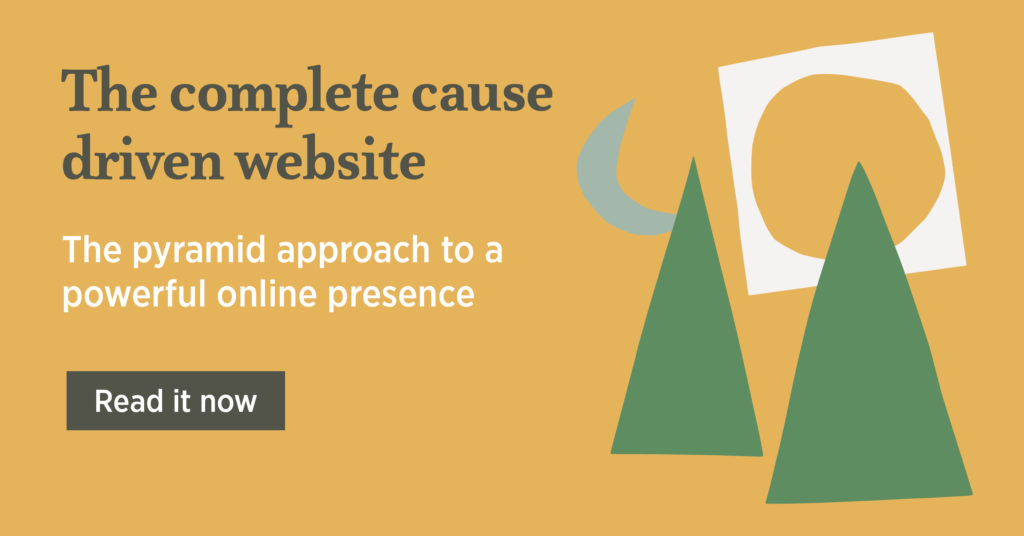When people talk about digital strategy they often mean their digital marketing plan but digital strategy incorporates much more than marketing. Digital strategy is a broad term which for a cause focused organisation can include marketing, sales, fundraising, membership and relationship management, support, IT infrastructure, governance, knowledge management, customer experience and more.

This is the third in a series of eight posts inspired by our eBook The Complete Cause Driven Website. Links to the other posts will be included at the bottom of the page as they’re published. You can download the book for free and it’s full of many more useful insights in creating a highly effective website for a cause.
Modern websites have a role to play in these business functions and so your site is quite central to digital strategy. At the same time your website is going to be influenced by a number of other strategies. We use the term website strategy to describe these overlapping priorities and to differentiate from the broader digital strategy.
Business Strategy
Your website is the public face of your organisation and more and more is becoming the engine room of your business. As such it should be significantly aligned with achieving your business goals. Depending on the cause you champion and how you’re working towards it, your business strategy will also incorporate strategies for campaigning, fundraising and other key functions. These will have your website as a central driver of success.
Marketing Strategy
Your website isn’t just a marketing tool but it certainly is important for achieving your marketing objectives. When planning the scope of your website, marketing goals should be layered on top of business goals, supporting and not overriding them.
Content Strategy
Looking through another lens, your website is mostly made up of content. Content is information with a purpose, format, audience and often a finite lifespan. Content strategy defines the processes, governance and tools used to manage content within your organisation. Without a robust content strategy your website will quickly become unmanageable. Content strategy is the key organising approach to supporting both business and marketing strategies.
Website Strategy
So website strategy involves business, marketing and content strategy and often other competing priorities within an organisation’s digital strategy.
Business and marketing strategies help us answer these questions:
- What does the website aim to achieve?
- Whom does the site aim to engage?
- How will it engage those people in order to achieve those goals?
Content strategy facilitates that engagement and also supports the ongoing life of the site. The final aspect of a website strategy determines how you will go about creating and maintaining the site.
Implementation Strategy
The standard approach to creating a website is to thoroughly research and document the scope of the site, design it, then build it. After launch this website will see regular content updates but perhaps little investment in continuous improvement, leading to another website being developed and replacing it within three to five years.
An alternative approach to implementation strategy has been embraced in recent years. Known as growth driven design or evolutionary web strategy, it is a form of continuous improvement. The approach involves launching a simpler website sooner in order to quickly get impact and test the effectiveness of the website in the real world. This website is regularly improved with new functionality which leads to a longer lived, more effective website and ultimately saves money.
The Complete Cause Driven Website blog series
- INTRODUCTION – The Pyramid Approach
- BRAND – Know yourself and powerfully communicate your purpose and values
- STRATEGY – Align your website with your business goals, approach your site with a long term plan
- EXPERIENCE – Understand what your community want and help them achieve it
- CONTENT – Communicate effectively with all your audiences
- INTERFACE – Build a site that encourages action
- IMPROVEMENT – Regularly make your site more efficient and effective
- PLATFORM – Ensure that your website has a foundation for success



